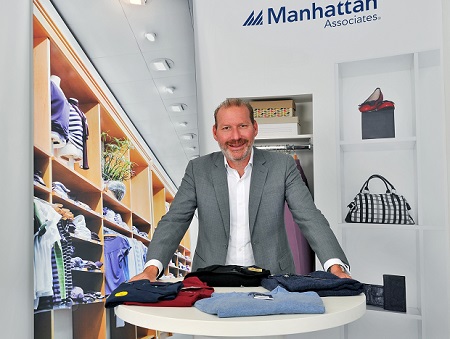In the wake of the news about stores are opening on UK High Streets at their lowest rate in seven years Craig Summers, UK Managing Director, Manhattan Associates discusses the evolution of the high street and what might be next.
As the news breaks that stores are opening on UK High Streets at their lowest rate in seven years, it is no secret that the high street has struggled over the years. But even in the more turbulent times the high street has continued to evolve to meet the needs of the age and the consumer. Whether it is a personal service, ecommerce, click and collect or contactless payments, the high street has learnt to flex with the consumers that make demands from it.
However, if we look at how this evolution has taken place over the last few decades, it has really only completed a full circle. Retail used to be about a personal experience that you had with each individual retailer, they knew your preferences, your name, your regular choices and your circumstances. This evolved into a convenience mentality as supermarkets and department stores were born and retail lost some of its specialism in some cases.
This was however, quite swiftly followed by a realisation that consumers, although they enjoyed convenience, were still very fond of the personal experience. This led to technology evolving to help with the need for more personalisation and in addition to this ecommerce took a very swift upward turn.
So, what have the real changes in retail been over the years and why have they had an impact on the high street?
A personal service
As the one to one retail experience started to decline and supermarkets became the norm for many, the personal service that was once inherent on the high street started to lose momentum. After the first ‘supermarkets’ as we know them hit the UK in 1968 in the form of the Tesco Superstore, consumers started to buy everything they needed from one place, with a seemingly faceless experience, that became even more stark as the evolution of self-service checkouts gathered pace.
However, it was soon apparent that consumers did still enjoy the personal aspects of shopping that once allowed our high street to thrive. Retailers have since focused their efforts on returning to their core values of being customer-centric and really taking the time to understand each individual customer and their needs. Fast forward to 2018 and retailers can now sync up every interaction across all retail channels, including the high street to provide consumers with a customer experience that is not only personal, but relevant. Some could say that this change could be the revival of the high street.
Ecommerce
In 1981 Thomson Holidays UK transformed shopping as we know it with the launch of the first B2B online shopping system to be installed. Since then ecommerce has gone from strength to strength with the online forum leading to a variety of changes on the high street as it struggled to keep relevant in the midst of ecommerce leaders like Amazon. Now, the physical store has evolved to act as part of a wider channel, you could almost argue that ecommerce in many senses takes the lead when it comes to retail, with the stores just acting as showrooms, collection points or customer service portals.
Technology
From cloud based POS systems to Virtual Reality in store, the breadth of technology available to retailers in today’s environment has certainly expanded over the years and it shows no signs of slowing. From recommendations to returns, every aspect of the retail ecosystem can now be seamlessly integrated. This proliferation of technology is playing a hugely important role now as consumers continue to integrate technology into their own shopping experiences themselves; whether it be browsing in store, paying via mobile device or sharing images with friends via smart mirrors, technology is now an integral part of the shopping journey.
Delivery
Delivery may sound like something that is only relevant to the ecommerce side of retail but this couldn’t be further from the truth. Delivery has always been an important part of the overall retail experience. Whether it be the traditional use of a milkman or the more modern use of drones, getting your goods to the consumer is very important. The high street today has adapted to become a key part in this journey, in particular as retailers over the last few years have widely adopted Click & Collect as a delivery option, which is seeing high street stores acting as delivery hubs. In addition. many retailers saw their delivery strategies change to accommodate ship from store options that allow high street stores to also become mini distribution hubs to fulfil local orders, all of which was driven by the consumer demand for next or same day delivery.
So what next?
Retail as we know it will no doubt continue to evolve as consumers demands change, the technologies available alter and ecommerce continues its relentless growth. But as far as the high street is concerned, it is apparent that the slow demise that has been predicted is far from the truth as the high street continues to be resilient in its survival. And whilst the traditional retailers are hot on the tails of the ecommerce giants, it is good customer service and awareness of a brand that will truly last the test of time.
By Craig Summers
UK Managing Director

